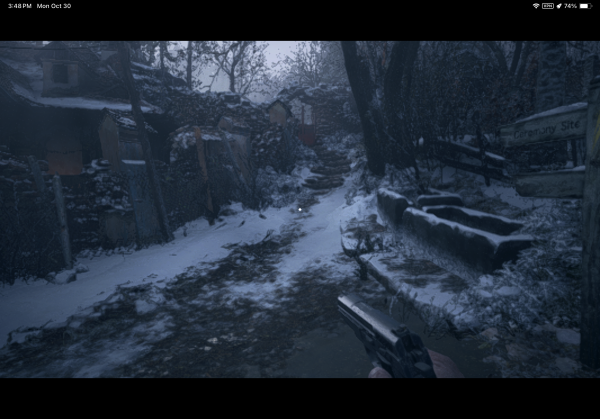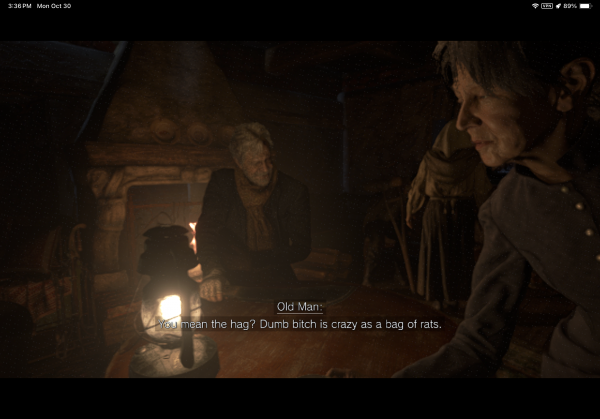Apple talked a big game about bringing bigger (ahem) games to mobile at last year’s WWDC, and the first title they touted as part of this effort is finally out. Capcom’s Resident Evil Village is out now on the App Store and is a complete mobile port of the original game.
I’ve gotten my hands on it and put a decent amount of time into the spooky survival-horror game, getting just a bit past the title’s “free-to-start” section and I recorded most of that experience in the video above. Because of Capcom’s rules about sharing gameplay, the video also has editorial captions about what I think of the game, but I’ll also outline some more thoughts below.
The first thing to note about the iOS version of Resident Evil Village is that it is very much that game and not anything more or less, for better and for worse. I’m not trying to sound facetious about this. What I mean is that the port of this feels almost exclusively focused on making it possible to play it on mobile rather than making it easy or good to play there.
If you play it on its own terms–say, with a controller and ideally a tablet–then it feels like you are mostly getting the same experience you can get from the console and PC versions. But if you don’t, you’re not very likely to have a good time. The virtual controls don’t really seem designed for people to actually use them. There’s too many buttons, and–aside from the ability to move the camera by tapping and dragging on the screen–there is no part of the control scheme that has been adapted to make controlling it with your fingers feel more convenient or manageable. Even the menus in game can only be navigated by inputting commands on the virtual buttons that cover the screen.

Assuming you always intended to play Resident Evil Village with a controller on an iPad, there’s still some more things to consider before potentially picking the game up. Although the game looks pretty sharp using its default graphical settings, it might be wise to turn down or otherwise tweak the display options to make things run a little smoother and keep your device from heating up too much. Luckily, Resident Evil Village has a ton of little knobs you can fiddle with to have the game run the way you want it to, which in my case is at a stable 60 frames per second without making my tablet feel like an oven (which is possible, at least on my iPad Pro 3rd Gen).
Something else to know is that Resident Evil Village is a sizeable game. In order to fit it on your device, you’ll need 16.21 GB of storage available, though only a little over half of that will download when you first boot the game. You’ll only be asked to download the full game if you opt to pay $15.99 for the base game after completing the free portion, which ends just a little after my video ends, with two set pieces revolving around the mysterious castle.
Speaking of which, Resident Evil Village has something strange going on with its download menus, in that they tell you not to lock your screen or exit the app, but in my second round of installing the full game onto my iPad, force closing the app was the only way for the download to make progress. It would just get hung up in random places and stay there for over 30 minutes.

Technical issues don’t quite stop there, either. As you can see in the video posted above, I encountered a strange problem with in-game cutscenes where the audio would move ahead of the action. I have since continued playing the game and not had this issue, but my entire experience with the free part of Resident Evil Village was plagued by it. It’s not the biggest deal in the world, especially since so far the story is just a lot of people yelling at each other and then dying, but still, it would be nice if the game behaved as intented, or at least I’d like to think so.
As for the contents of the game itself, Resident Evil Village feels like a Resident Evil title that really wants you to remember it’s a Resident Evil game. It wastes no time having one of its core characters make a cameo and its opening setpiece is ripped straight out of the Resident Evil 4 handbook. I’ll have to put more time into it to have more of an opinion on it than that, but I’m also sure at this point in the game’s life cycle you already have a sense of the general critical consensus of Resident Evil Village and I’m not sure I’ll have much to add to that conversation even after I’m finished with it.